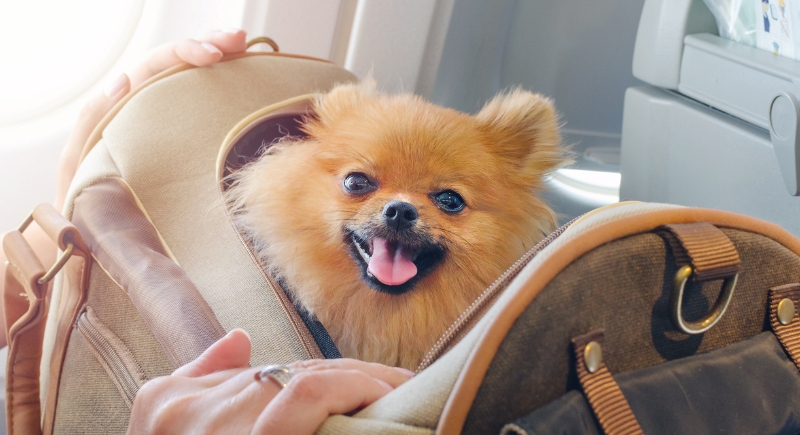How Do Pets Go to the Bathroom on Long Haul Flights?
Airlines do not have a built-in bathroom system for animals, which makes long flights challenging for both pets and pet owners. Once the plane departs, dogs, cats, and service animals face different restrictions.
In such cases, preparation becomes the main factor for reducing stress, avoiding accidents, and keeping the flight manageable. Keep in mind that every stage of the journey, from pre-boarding routines to post-landing relief, plays a role in how pets handle bathroom needs.
Devising a Plan Before Boarding

Image via Getty Images/nadisja
Your planning should always begin ahead of check-in. Veterinarians typically advise reducing food and water intake at least four to six hours prior to a flight, which lowers the chance of accidents in the air.
Dogs should go for a proper walk before heading to the airport, while cats benefit from a litterbox session. Airports also have designated pet relief areas that give travelers another opportunity to make sure their animals are comfortable before boarding.
Training a dog to use a pad or relieve itself on command also helps, especially in busy terminals where grassy areas may not be accessible. You can prepare the crate or carrier with absorbent pads, too, which creates an added safeguard. These small steps help determine how smoothly pets will handle a long flight.
In-Flight Realities
Remember, once the aircraft takes off, pets have limited options. Most healthy adult dogs and cats can hold their bladder for six to ten hours, though some international routes exceed that time. For cabin pets, the carrier remains closed under the seat. If a mishap occurs, pads placed inside absorb waste until landing.
A few flight crews allow small dogs to use the lavatory with a pad, but that is rare and requires approval. In the cargo hold, animals stay inside kennels without breaks, which makes preparation prior to boarding essential.
Puppies, seniors, and pets with medical needs often require extra measures such as diapers or belly bands, since their control is weaker. Owners cannot intervene mid-flight for cargo companions, so pre-flight exercise and carefully lined crates remain the best defense against bathroom incidents.
Cargo Travel Challenges

Image via Getty Images/MirasWonderland
Large dogs can usually not fly in the cabin and must go into the cargo hold. Airlines require sturdy kennels, which must be lined with pads that can absorb liquid if the animal relieves itself during the journey. Since cargo pets do not have access to relief areas, everything depends on the crate setup that you have thought of in advance. Frozen water bottles are typically recommended since they melt gradually and prevent spills that could soak bedding and cause discomfort.
Meanwhile, you have the option of relieving your pup during layovers, but various airlines differ in how they use these. Some carriers, such as Lufthansa, provide bathroom breaks during extended stopovers, but this is not the norm. For most flights, your furry friends stay locked in their kennels until the final destination.
Pet parents clean up after landing, so packing wipes, bags, and extra bedding is an important part of planning. Cargo travel requires careful organization because once the kennel door closes, there are no further options until arrival.